Carb clean |
If
you’ve bought a bike that’s been sitting around a while and the old
fuel in the carbs has gone off and turned into a sticky goo or maybe
one or more of the carbs is dumping fuel out of the overflow pipes then
it’s time to give the carbs a good clean out. It’s
obviously easier to work on the carbs if their on the bench not on the
bike but it can still be done although working on the top end of the
carbs is a bit awkward but, often just cleaning out the jets is enough
to fix the problem. |
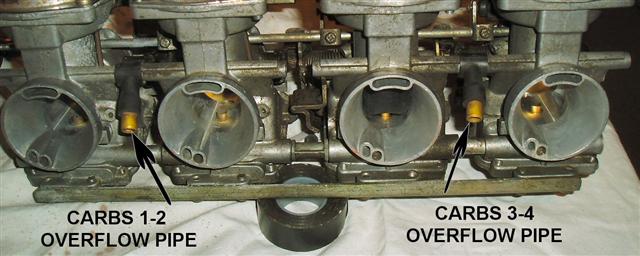 |
The
overflow pipes connect to pairs of carbs 1-2 and 3-4 so if fuel is
coming out of the left hand overflow pipe (when sat on the bike) then
it’s either carb 1 or 2, if it’s the right hand overflow pipe it’s
either carb 3 or 4. |
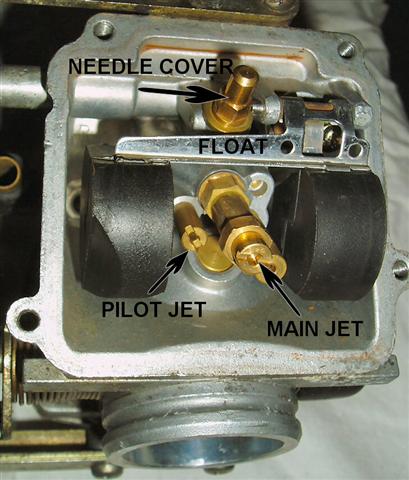 |
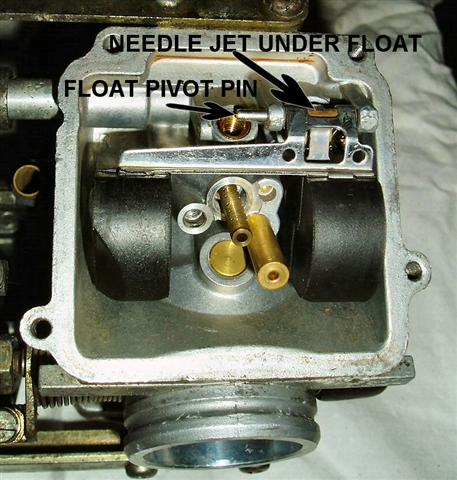 |
Remove the float bowl to get to the jets and float. |
Unscrew and remove the main jet and pillar, the pilot jet and needle cover. The float pivot pin can then just be pushed out. |
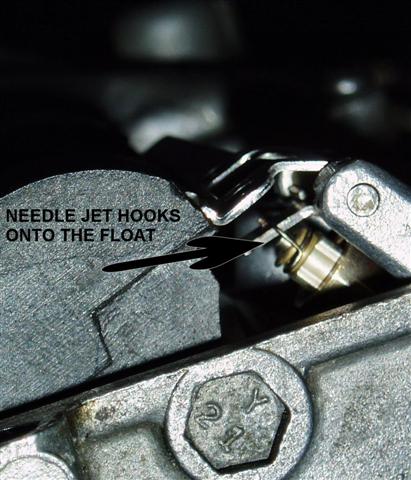 |
The
needle jet under the float is attached by a wire clip that goes onto a
metal tab on the float, it may fall off when removing the float but
don’t panic it’s easy enough to clip it back on when reassembling. |
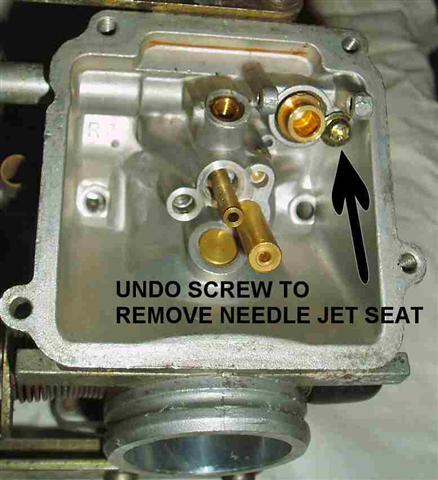 |
When the float has been removed you can get to the screw holding the needle jet seat in place which just pulls out. |
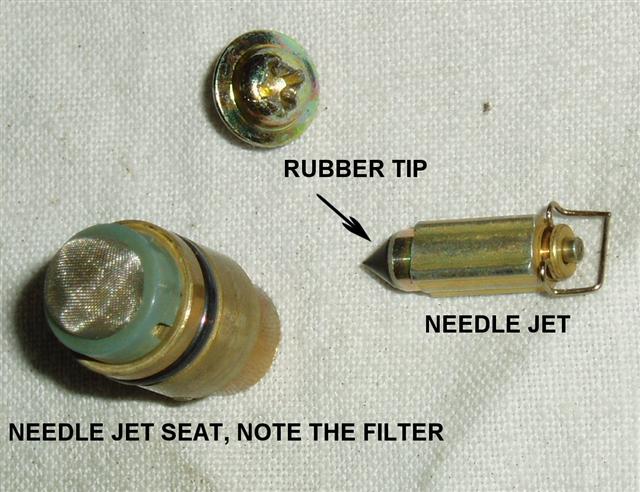 |
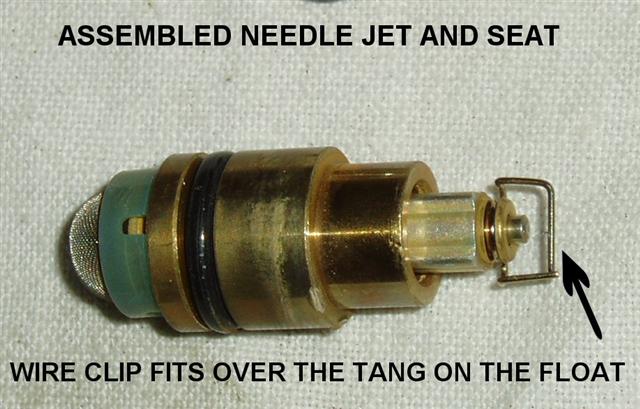 |
| There is a often forgotten little filter on the needle jet seat which is easily clogged up so make sure it’s clean. The tapered rubber tip of the needle valve is often the cause of carbs overflowing, it only takes a minute bit of dirt to get stuck between the tip of the needle valve and the needle jet seat and it won’t seal properly so fuel keeps flowing into the float bowl and then out the overflow pipes. The needle jet rubber tip can wear out so if it won’t stop leaking despite everything being clean then the needle valve may need replacing. |
|
So, you’ve pulled it all to bits and chucked it around the bench and dropped it on the floor, well these are all the bits you should still have ;>) Reassemble in reverse order, as they say in the manual. |
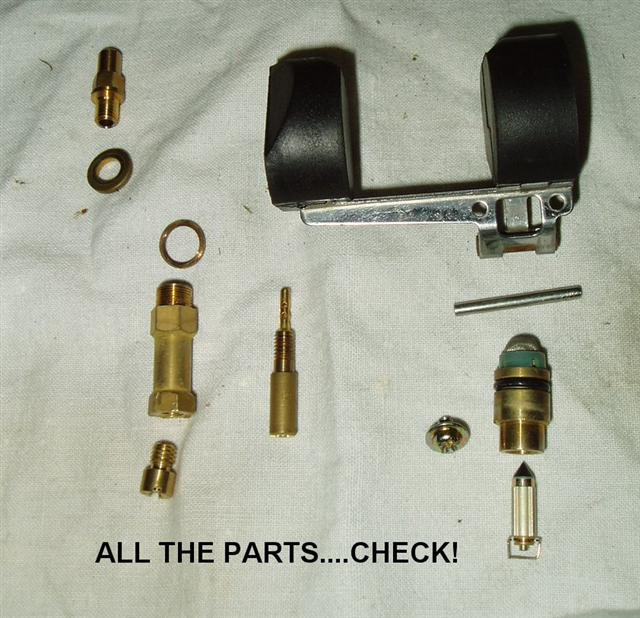 |
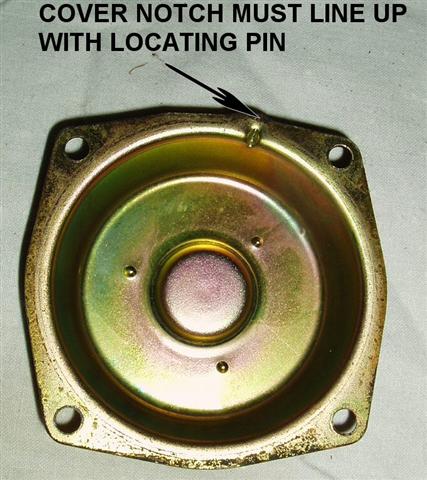 |
 |
Remove
the top cover to access the diaphragm, note that on reassembly the
diaphragm and top cover must line up with the locating pin in the carb. |
Note. There will be a spring inside the slide when the top cover is removed but it’s missing in these shots. |
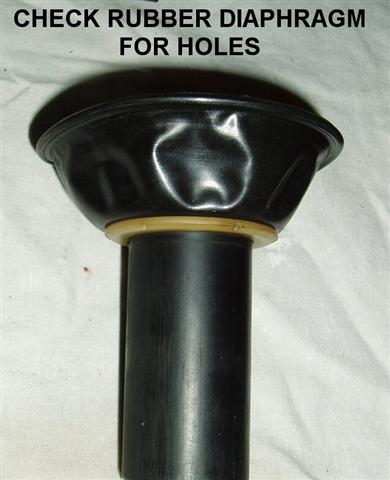 |
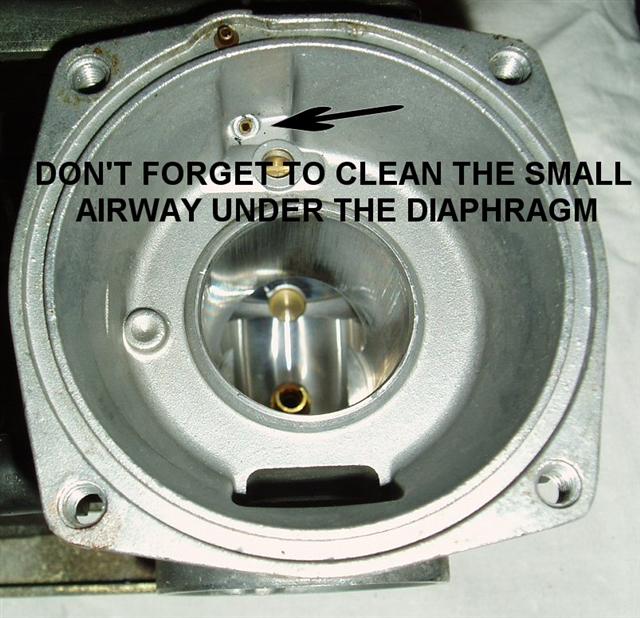 |
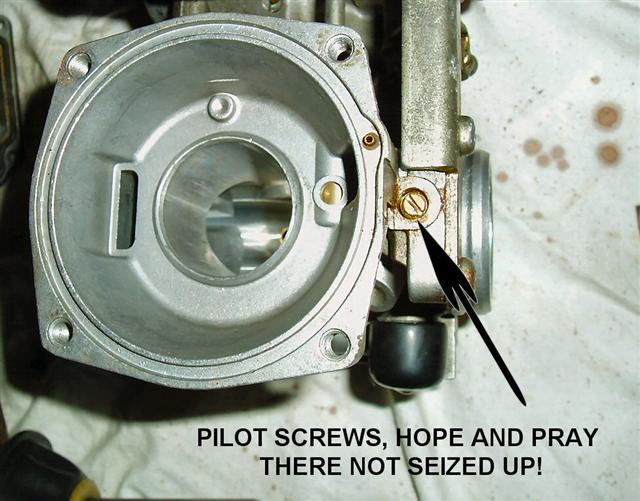 |
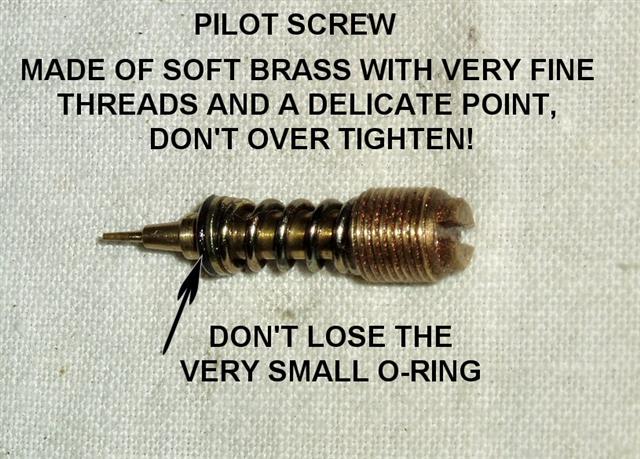 |
The
pilot screws have a nasty habit of seizing up or even worse someone has
removed them and cross threaded them when screwing them back in. Because their made of brass the screw head on them can easily get chewed up making it impossible to remove with a screwdriver, if any of the pilot screws are seized and your not sure how to try and remove them then take the carbs to a professional workshop or engineer as they need some delicate work to remove them because the carb bodies will crack and break easily.If the pilot screws are all nice and free then to keep them that way use some copperslip grease on the threads and plug the hole above the pilot screw with copperslip as well to keep out dirt and water. The setting for the pilot screws is 2-1/2 turns out, so screw it all the way in but don’t over tighten it and unscrew 2-1/2 times. |
NEXT PAGE |